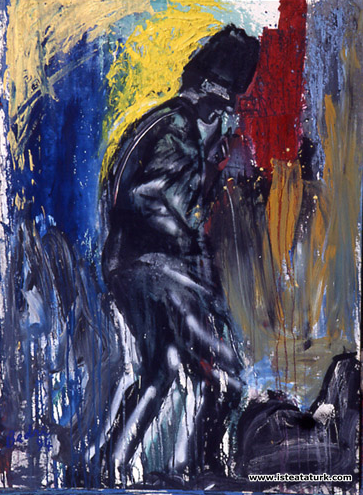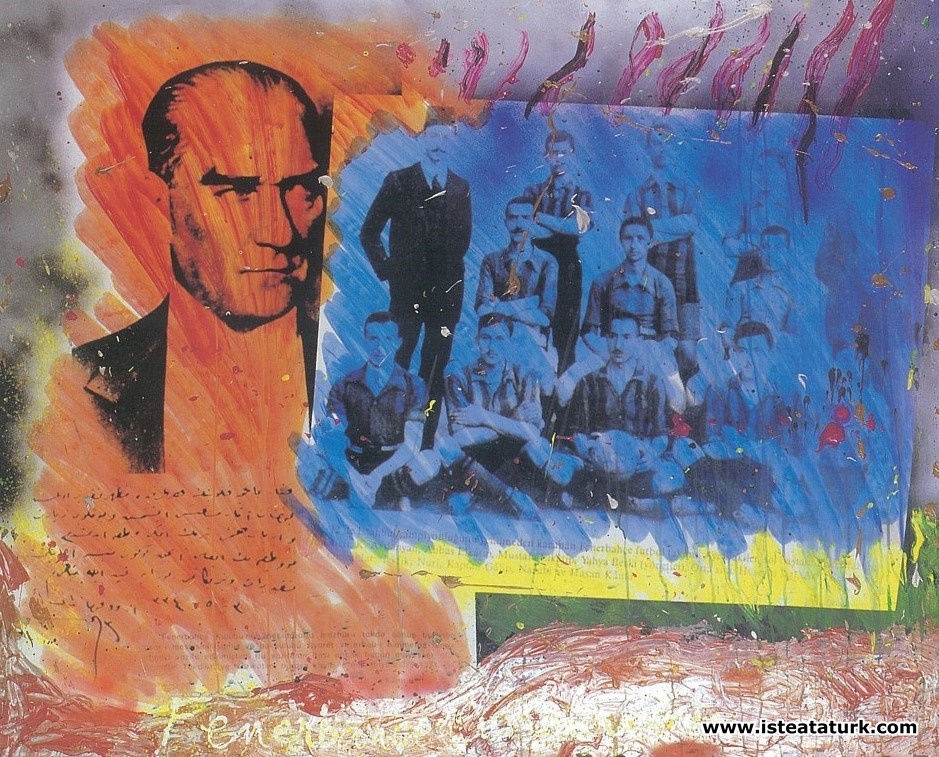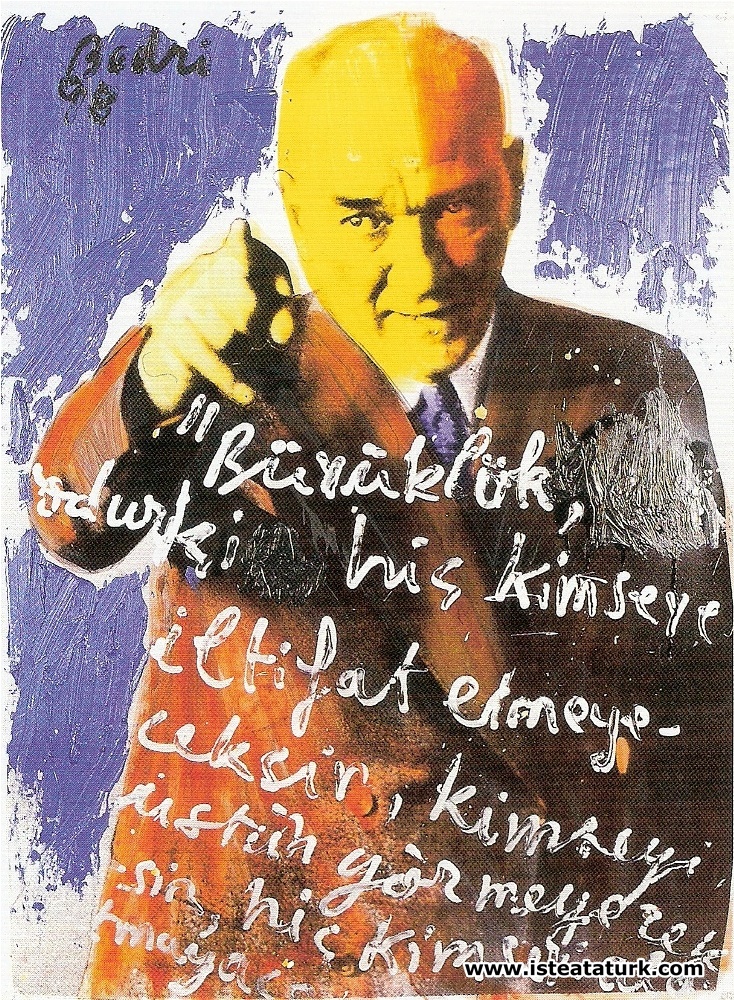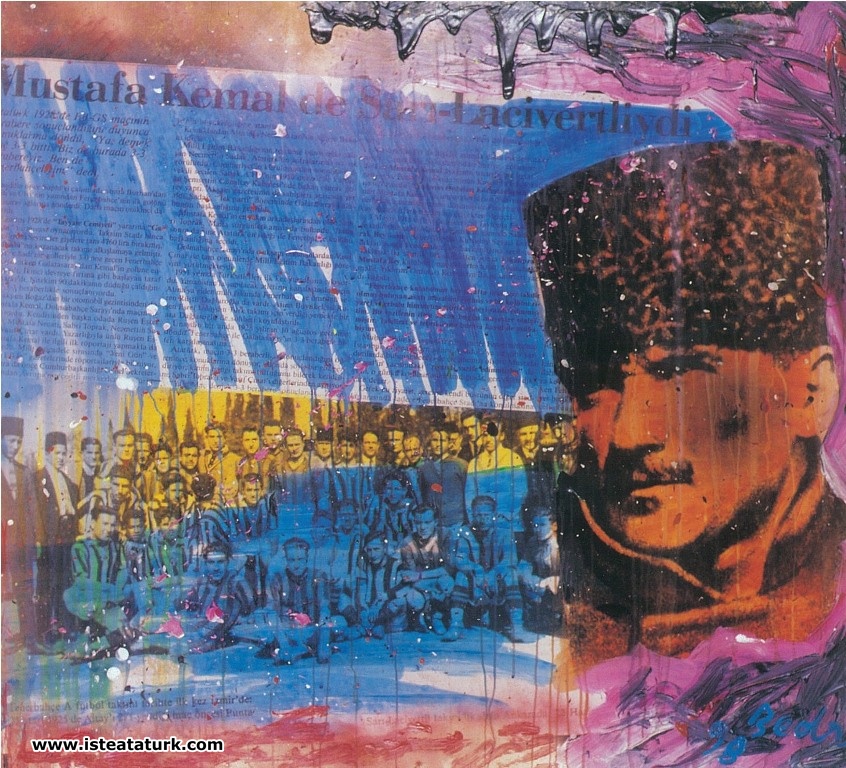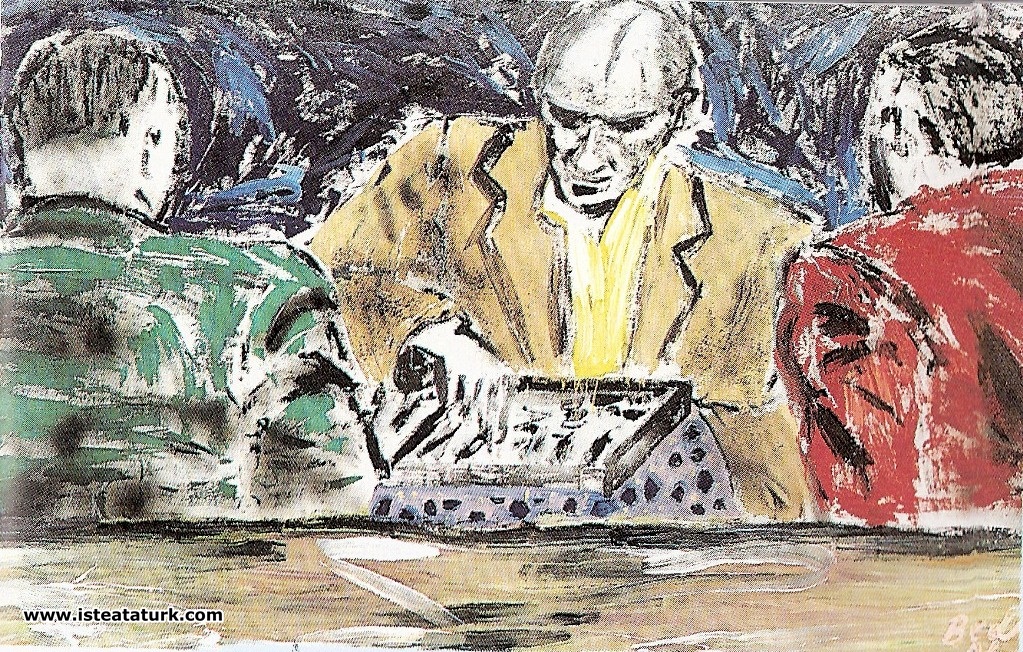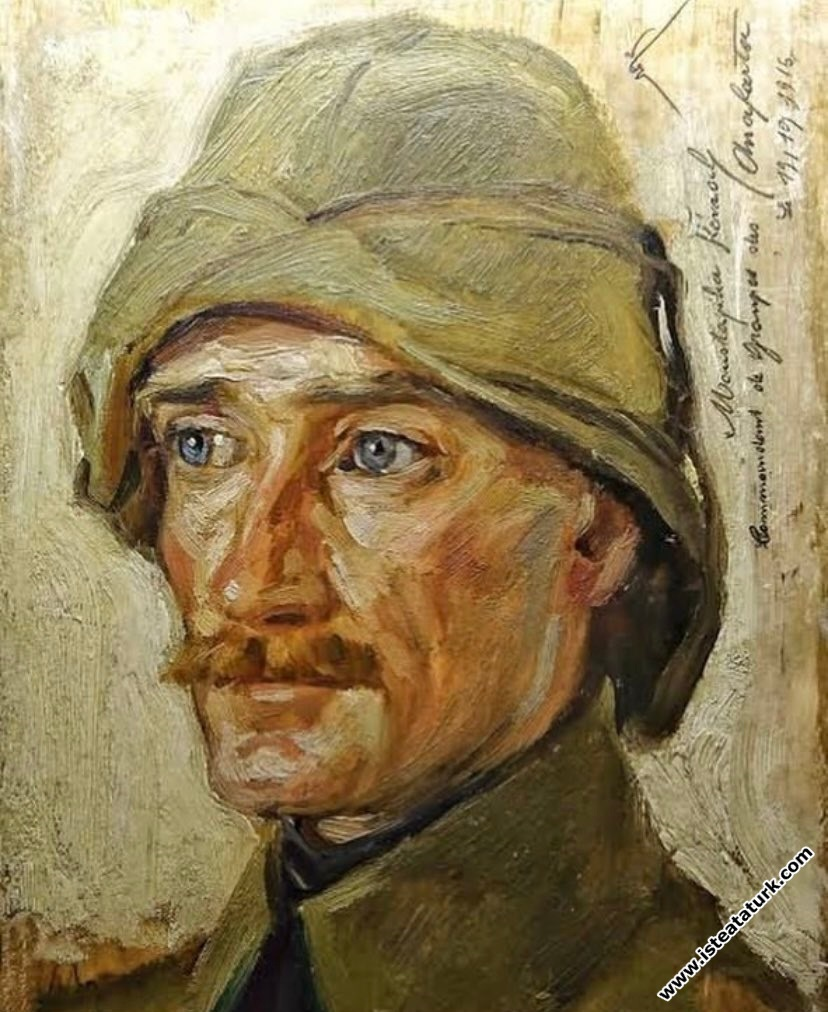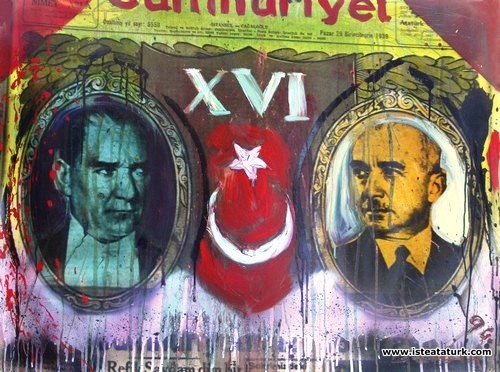
Bedri Baykam, Atatürk and İnönü, 1994
Character Size
Atatürk and İnönü, 1994, mixed media 109 x 83 cm
BEDRI BAYKAM (1957, Ankara)
Bedri Baykam, CHP deputy in Ankara in 1957, Dr. He was born as the second child of Suphi Baykam and Master Architect Engineer Mutahhar Baykam. He started painting at the age of two. At the age of six, he exhibited his first works in Ankara, Bern and Geneva. In the 1960s, when he was described as a child prodigy, he constantly exhibited in many art centers in Europe and America, and attracted great attention. Bedri Baykam, who attended Istanbul French High School, moved to Paris in 1975. Baykam, who studied business and economics at Sorbonne University, received a master's degree from this faculty. In the same period, he studied acting at a private school called L'Actorat in Paris.
The artist, who moved to America in 1980, studied painting and cinema at the California College of Arts and Crafts until 1984. Baykam remained in America until 1987, and continued to open many exhibitions in San Francisco, New York, Istanbul and Paris during this time.
Moving his workshop to Istanbul in 1987, Baykam has opened 86 solo exhibitions, participated in many group exhibitions, shot many short films and video films, acted as an actor in short and feature films. Baykam has 17 published books.
The artist, who is an active member of the Association for Supporting Contemporary Life and the Kemalist Thought Association, is also one of the founders and former 2nd president of the Plastic Arts Association (UPSD). Baykam, who organized and directed the Grassroots Operation movement, which was established to unite the three social democratic parties, together with the heads of various democratic mass organizations, was elected as a member of the CHP Party Assembly at the 1995 CHP congress and continued this duty for three years. He previously had a column in Güneş, Tempo, Siyah - Beyaz, Cumhuriyet, Aydınlık and Akşam, prepared and presented a cultural discussion program called “The Color of the Period” on Prima TV for three years, and was the general publication of Artist - Skala art magazine for 2 years. Baykam, who is also the director of the magazine, is published every 2 months,
Baykam, one of the pioneers of the New Expressionism movement and also known for his multi-media installations (Livart) and collaged political artworks, is an artist who likes to constantly change his skin. He has directed many 16 mm short films since the early 80s and acted in various feature films.
In December 1999, a retrospective exhibition of his 40-year art adventure opened in Istanbul, AKM. American director Stefan R. Svetiev's film “This Has Been Done Before” was completed in the same period as a documentary about the artist's entire career and political life. On the same occasion, Dimension Publishing Group published the 480-page monograph titled “I'm Nothing But I'm Everything”, which brings together all periods of Baykam.
Bedri Baykam, who was one of the Party's Chairman candidates at the CHP convention in 2003, is one of the intellectuals who have been in the middle of the political scene in our country for years.
Baykam is also the owner of Piramid Film Production Production and Publishing company headquartered in Istanbul.
He married journalist Sibel (Yağcı) Baykam in May 1997. In January 1999, the couple had a son named Suphi.
BEDRI BAYKAM, THE 80'S - CALIFORNIA "FIRST YEARS OF THE NEW EXPRESSIONARY CURRENT"
Bedri Baykam is the most important representative of the New Expressionist wave of the 80s in Turkey...
The name of the "New Expressionism" movement, which started with new canvas paintings made simultaneously by artists unaware of each other, in America and Europe, especially in Germany and Italy, began to be used in 1982. Bedri Baykam lived in the early 80's in California and was among the first artists to practice this style without a name yet, like his unaware and distant colleagues.
"The fact that the art I made in 1982 was a part of the international movement, which was later named New Expressionism, in parallelism, and that I signed those works simultaneously with the most important American, French, German and Italian artists of the period brought this to Turkish art history for the first time. A Turkish artist produced works of an international movement simultaneously with the West. That is, he is a creator, not a follower."
The distinctive features of the best works of art in the 80s were the fullness of color and form, the richness of presentation, and the simplicity of expression used in some cases for dramatic effect. Sometimes this feature was used to express insignificant, self-centered thoughts about art, and sometimes to express very complex and important human problems. In this period, the approach to the conceptual works of art of the 1970s began to fall into the background, and canvas painting announced its return. Artists with this strong turn; In this process called "New Expressionism", while providing expansions regarding his own cultural origins, he added illustrative elements, ready-made objects in addition to purely modernism elements in his paintings from different disciplines; They also made use of sculpture or photography. Whether their stories are simple or heavy, Francesco Clemente,
The artists, who rebelled against the elements of Abstract Modernism, produced large-scale series of works as well as presented a wide range of subjects.
Bedri Baykam's works of this period, which were exhibited simultaneously with his western colleagues in New York, Paris and Istanbul, and which enabled an international art movement to be experienced in Turkey simultaneously and simultaneously, are the most important period of the artist in terms of Turkish art history. can be said. The artist's first masterpiece of this period, which started with the 80s and laid the foundations of his next period, is his work called "The Prostitute's Room".
In the ongoing process, Baykam became more conscious in his "New Expressionist" works and experienced a development process towards conceptuality, without going beyond the borders of the canvas. In his ever-growing canvases, not only the visual, but also the projections of his intellectual-political approaches began to take place.
Again in these years, in 1984, he published the manifesto "Modern Art History is a Fate of the West" against the monopoly of the western art scene. This output made a big impact in the international arena.
At that time, Baykam's works such as "Danton Didn't Lose His Blood for Nothing", "I'm Doing My Best", "If They Killed the Snake", "New York is the Sea to Drink", "Inner Landscapes Series", each one of which is undoubtedly a masterpiece.
Mac Art Gallery
BEDRI BAYKAM'S 4-D
Bedri Baykam's four-dimensional and world-first paintings, which started to be exhibited in 2007, attract great attention.
Mamade Kadreebux, a Mauritian writer, poet and photographer living in California, says the following about 4-D's, which make a name for herself in every country where they are exhibited: "A new page: Bedri's art has irreversibly changed our way of looking at art, our way of looking at life, it changes the way we perceive the world... In other words, painters, poets, philosophers have reached such a point in their art that we will never be able to look at art the way we used to look at it for years..."
In his latest 4-D works, Baykam almost reconstructs the history of art, which stretches back over a century, with surreal references in the 4th dimension, both on his own autobiography and on art history, with the ebb and flow of time. Many immortal names of art history, from Jackson Pollock to Salvador Dali, from Marcel Duchamp to Leonardo Da Vinci, from Van Gogh to Joseph Beuys, come back to life in these works.
In the last 1 year, 4-D works exhibited in various museums and galleries in California (Alphonse Berber Gallery), Berlin (Akademie der Künste), London and Paris (Opera Gallery) have become the focus of attention of the entire art world since their first appearance in 2007. and included in many collections.
Bedri Baykam's 4-D works, which have been exhibited in Monaco, Berkeley, Berlin and London in addition to Istanbul and Ankara in the last year, will be exhibited again in Istanbul, Paris and Los Angeles in 2010.
Source: www.turkishpaintings.com
Other Atatürk Works of the Artist
